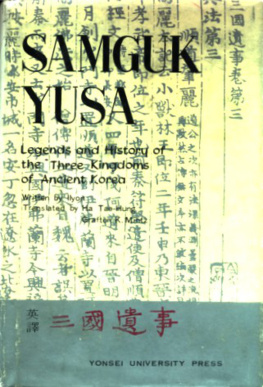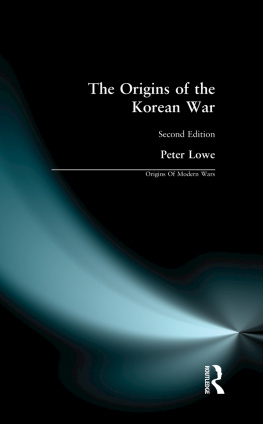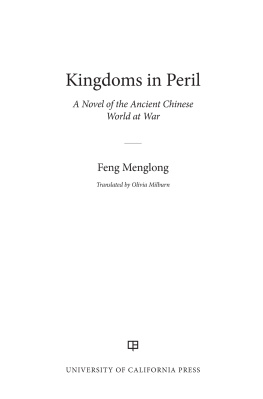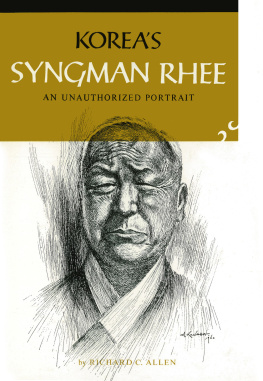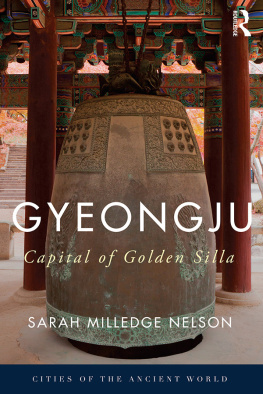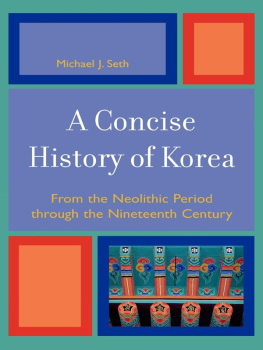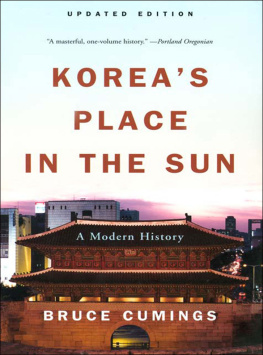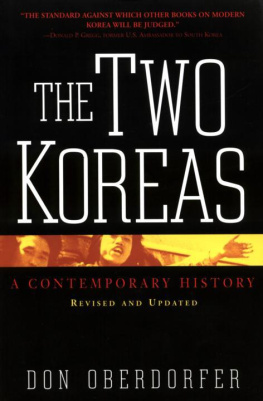This page copyright 2006 Silk Pagoda.
Legends and History of the Three Kingdoms of Ancient Korea
PREFACE
I
Modern civilizations developed from the beliefs and customs of people in prehistoric times. It is thus essential, if we are to understand a civilization, to study these ancient practices. The difficulty is usually that source materials are very scarce, and most of our understanding of ancient times is based on the findings of archaeology.
In the case of Korea we are fortunate to have two documents which, while by no means contemporary with the events they describe, rely on ancient sources which by now have mostly disappeared. The first of these, Samguk Sagi (History of the Three Kingdoms) was compiled by Kim Pu-sik (1075-1151), a high official of the Koryo court, as the officially sanctioned history of that ancient period. It has the faults of most official chronicles, forcing events into a framework pleasing to the government and omitting all matter thought to be embarrassing or indecorous.
The second such document is the present work, Samguk Yusa (roughly, Legends of the Three Kingdoms) compiled by Ilyon (1206 1289), National Priest (Pogak kukjon) of Koryo. One of the chief values of this book is that it includes a great deal of material omitted by the official history, so that through it we can gain an understanding of the beliefs and practices of the people of ancient times, if somewhat distorted by the author's Buddhist point of view.
For that matter, the introduction of Buddhism itself dates from the Three Kingdoms period, and Buddhism has had a strong influence on Korean culture ever since. The book is thus also valuable in that it gives us an insight into the way this religion developed in the course of Korean history.
The book was written at a time when Korea was under the domination of the Mongols, who at that time ruled all China and Central Asia.
Ilyon makes hardly any mention of this fact, but the very writing of such a book at such a time is significant, and the author's love for his country shines through every page.
Since the termination of the Pacific War (1941-1945) Oriental scholars have undertaken restudy of Samguk Yusa in order to discover historical developments of peoples in the East buried in mythology and the sagas such as Samguk Yusa. Both Korean and Japanese scholars naturally take special interest in the reinterpretation of the tales in the book as a part of Oriental studies in history, early poetry in archaic language, and customs in addition to large portions of the book on Buddhism and also interregional contacts between Korea and Japan.
During the past year I had a booklet Tales from the Three Kingdoms" published containing selected materials from Samguk Yusa, Samguk Sagi and some other old literature to give preliminary information on the Three Kingdoms, before I completed the unabridged translation of Samguk Yusa. If this volume can be of service to Western scholars and general readers interested in Korea and Korean culture I shall have attained my purpose.
Like all such books of its time, Samguk Yusa was written in literary Chinese. In preparing this English version, I have been greatly aided by Mr. Yi Chae-ho's translation of the book into modern Korean, and by a similar work by Dr. Yi Pyung-do. I would also like to thank Dr. L. George Paik, President Emeritus of Yonsei University, who inspired me to undertake this work, and Mr. Grafton K. Mintz of the Korea Times for language of the manuscript and for his suggestions concerning the general arrangement of the book. Finally, I am deeply grateful to the Yonsei University Press for agreeing to publish the book and for its help and understanding during the preparation of the volume.
Tae-Hung Ha
October, 1971 Seoul, Korea
II
In preparing this version of the Samguk Yusa my chief care has been to make the text easily accessible to the reader. For this reason I have kept footnotes to a minimum and have supplied explanations in parentheses where necessary. Except where indicated, therefore, the material in parentheses has been added by me. It should be added that almost all this information is taken from the very full annotations made by Mr. Ha in his original manuscript.
Ilyon, like his contemporaries, dates events in two ways, by the reigns of Chinese emperors and by the twelve-year cycle of the animals of the zodiac. Each succeeding emperor had an official name for the period of his reign, and sometimes he might have more than one for different periods. I have let these stand, though mostly in abbreviated form, and have added Christian-era dates in parentheses. All dates are A.D. unless otherwise noted.
Certain suffixes occur rather frequently in place-names. I have explained them in the text, but for the convenience of the reader will also translate a few of the most frequent ones here. Thus sa means temple jon means pavilion, song means wall or fortress, and san means mountain. I should like to acknowledge here the kind cooperation of Mr. Ha and also of Professor Jun Hyung-kook, the director of the Yonsei University Press. Their cordial attitude and their toleration of my crochets about the English language have made my work on this book a joy. It is my hope that the reader will find equal pleasure in it.
G. K. M
INTRODUCTION
FOR THE READERS
Our knowledge of the ancient history of Korea is scanty. Contemporary documents are few, and consist mainly of Chinese writings which allude here and there to Korea. Other documents we know only by quotations in later writings, for wars and invasions destroyed the originals and they have not survived. During the Koryo dynasty (935-1392) two chronicles of Korea's earliest period were compiled. The first, Samguk Sagi, was written by Kim Pu-sik, a high government official, in the twelfth century. It followed the pattern of Chinese dynastic histories and the conventions of Confucian historiography, the idea being that one may learn from history by studying the virtues and vices of the rulers of the past.
The Confucian tendency was to humanize the myths and legends of the past, to interpret them as early distortions of events that actually occurred, and thus much of what was actually mythology and folklore has been obscured by attempts to fit it into the framework of actual events. Thus the Samguk Sagi, while it contains considerable material that is obviously legendary, attempts to fit the legends of early Korea into the framework of Confucian attitudes.
The second such document is the Samguk Yusa, the present work, Its author was a Buddhist priest who was interested in the early history of his country. The book had no official sanction and was thus not at the mercy of the official philosophy of history, While the writer subscribed to the Confucian idea of history to a great extent, he was also intelligent enough to see that history could not be forced into a predetermined framework and was content to set down the old stories as he found them, without much effort at interpretation.
The title is difficult to translate. Yusa does not mean precisely legends, although that idea is implied by the word. It also carries the ideas of anecdotes, memorabilia and the like. It was not conceived as a set piece of scholarship but was written in the author's leisure hours as a kind of diversion. Its value is not so much historical in the strict sense of a chronicle of events as it is an account of the beliefs and folklore of medieval Korea, much of it dating back to earlier times. It is thus a valuable supplement to the officially sanctioned view of history found in Samguk Sagi,

